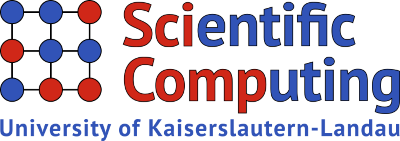Fast Optimization for Complex 3D Systems of Aero Engines
In industry, numerical shape optimization for complex 3D systems of aero engines is done by genetic algorithms in preliminary design phase and in detailed design by the use of gradient-based optimization methods. In detailed design, the number of design parameters is large and therefore gradient-based methods perform better than evolutionary. Furthermore, local optimal designs are of interest in detailed design phase. One wants maximum increase in performance without changing the shape too much any more. However, the computation of the gradient vector is still computationally very expensive as long as finite difference methods are employed. But this can be overcome by the use of adjoint methodologies. Here, the numerical effort for the gradient computation is independent of the number of design variables.
The chain of tools used for the simulation of turbines or compressors of aero engines involves grid generators, flow solvers and pre- or post-processing tools. For the computational efficiency of design or optimization tool chains, adjoint versions of the entire design chain are generated, so that the overall optimization effort in total still is independent of the number of design parameters. The adjoint versions are generated in an automated fashion by the use of Automatic Differentiation (AD) techniques. Furthermore, we transfer innovative optimization techniques to industrial design applications for aero engines, like e.g. one-shot methods, which have been developed in previous research projects.
Partners: MTU Aero Engines
Funded by Federal Ministry of Economics and Technology (BMWi), Project HiSpeet
Contact: Max Sagebaum, Dr. Emre Özkaya and Prof Nicolas R. Gauger.
